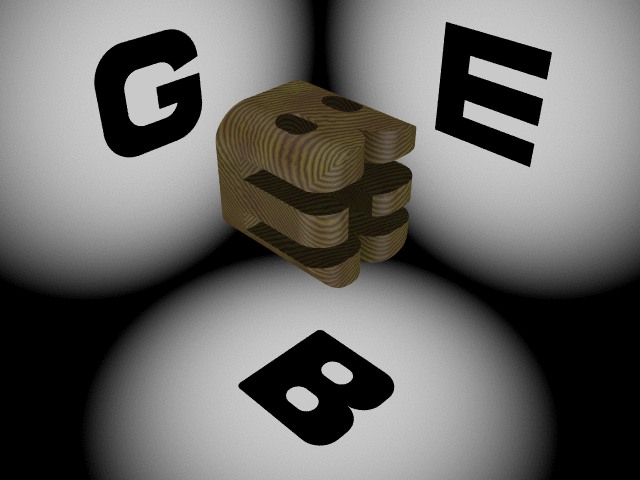 |
POV art by Paul Stansifer |
 |
POV art by Paul Stansifer |
| Alice |
Introduction and notes by Martin Gardner. The Annotated Alice: Alice's Adventures in Wonderland & Through the Looking-glass by Lewis Carroll. New York: Norton, 2000, ISBN 0-393-04847-0. The work contains the two most famous stories of fantasy fiction by Lewis Carroll the pseudonym of Charles Lutwidge Dodgson (1832-1898). He studied at Christ Church, Oxford, England, and after obtaining a Bachelor of Arts Degree in Mathematics, he remained at Christ Church as Mathematical Lecturer for the 47 years until his death. This edition combines the notes of Gardner's 1960, The annotated Alice with his 1990 update, More annotated Alice, as well as additional discoveries and updates. It includes the classic art of Sir John Tenniel (1820-1914) Alan Perlis (1922-1990), first editor of Communications of the ACM, first President (1962-1964) of the ACM, first (1966) recipient of the ACM's Turing Award, said: “The best book on programming for the layman is Alice in Wonderland; but that's because it's the best book on anything for the layman.” 
|
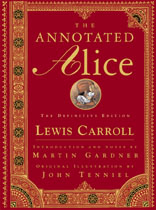 |
| Hofstadter | Douglas R. Hofstadter. Gödel, Escher, Bach: an Eternal Golden Braid. Basic Books, 1979. ISBN 0-465-02685-0 Hofstadter is currently College Professor of Cognitive Science and Computer Science; Adjunct Professor of History and Philosophy of Science, Philosophy, Comparative Literature, and Psychology. He got his Ph.D. in physics from the University of Oregon in 1975. The book won the Pulitzer Prize for general non-fiction in 1980. The book includes the short tale by Lewis Carroll, "What the Tortoise Said to Achilles," Mind 4, number 14, April 1895, pages 278-280, in which the Achilles tries to force the tortoise to accept the law of modus ponens. It also includes the MU-puzzle, an introduction to formal systems, an explanation of Gödel's incompleteness theorem, ... Wikipedia has an article about the book.
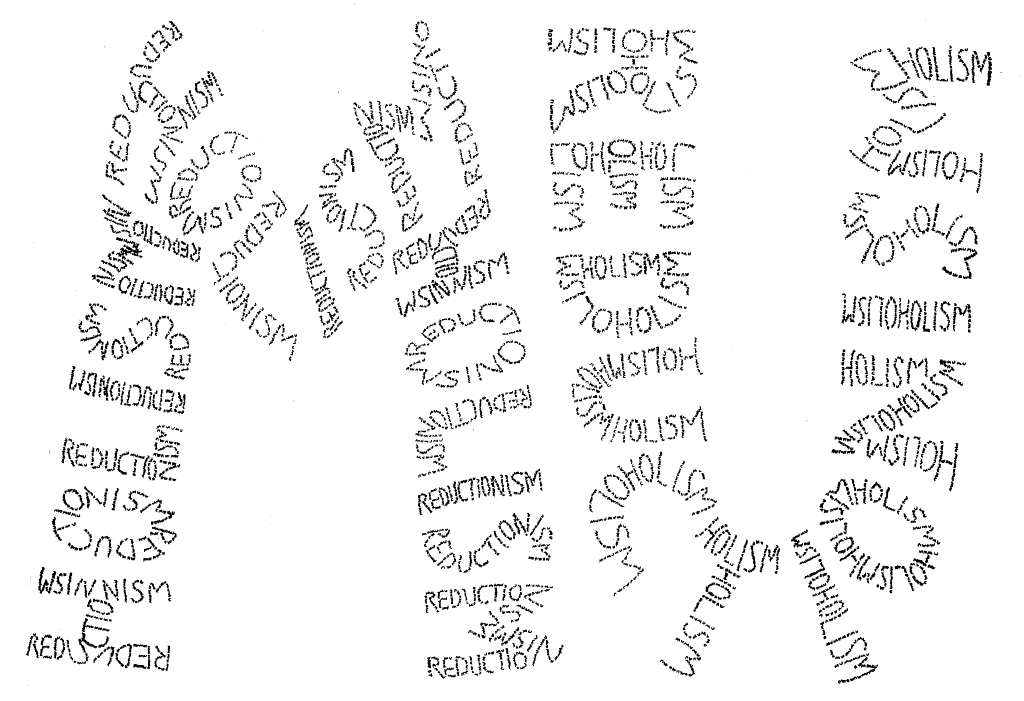
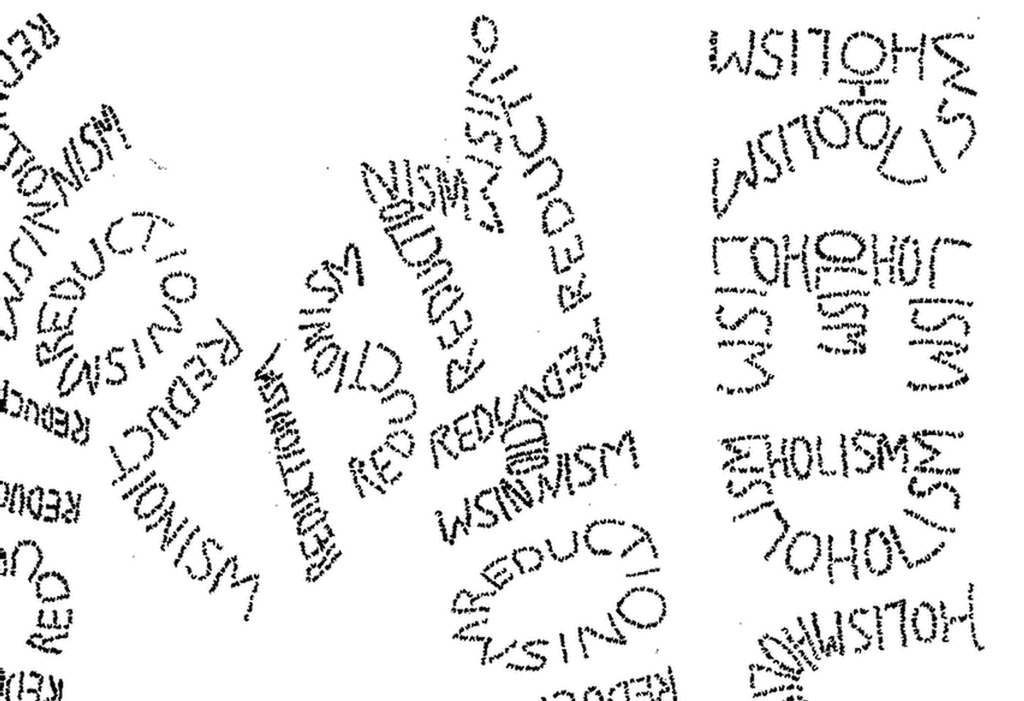


|
 |
| Hofstadter | Douglas R. Hofstadter. Gödel, Escher, Bach: an Eternal Golden Braid -- 20th Anniversary Edition. New York: Basic Books, 1999. ISBN 0-465-02656-7 A new preface by the author, but otherwise is a facsimile of the original edition, with the exact same 777 pages |
 |
| Hofstadter |
Douglas R. Hofstadter. Metamagical Themes: An Interlocked Collection of Literary, Scientific, and Artistic Studies. New York: Basic Books, 1985, ISBN 0-465-04540-5. Successor to Martin Gardner's column "Mathematical Games" in Scientific American. These columns appeared between January 1981 and July 1983. Chapter 14: Magic Cubology (Rubik's Cube). |
 |
| Hofstadter | Edited by Douglas R. Hofstadter and Danniel C. Dennet. The Minds's I: Fantasies and Reflections on Self and Soul. New York: Basic Books, 1981, ISBN 0-465-04624-X. Description: vii, 501 p. : ill. ; 24 cm. Includes selected writings of Jorge Luis Borges (1899-1986) and others with philosophical reflections by the authors about self, intellect, and consciousness. Includes previously published works by Alan Turing (1912-1964), Richard Dawkins, Raymond Merill Smullyan (b. 1919), John Serle, Stanisław Lem (1921-2006), among others. |
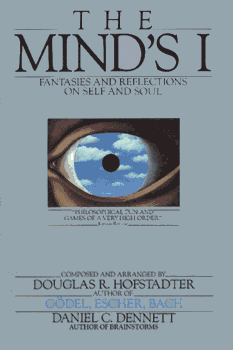 |
| Hofstadter | Douglas R. Hotstadter. Le Ton Beau De Marot: In Praise of the Music of Language. New York: Basic Books, 1997, ISBN 0465086438. Description: xxiv, 632 p. : ill. ; 24 cm. Concerns the art of translating and includes the text of A une damoyselle malade by Clément Marot (ca1495-1544) with numerous English translations. Wikipedia has an article about the book. |  |
| Dewdney |
Alexander Keewatin Dewdney. The Armchair Universe: An Exploration of Computer Worlds. New York, New York: W. H. Freeman, 1988, ISBN 0-716-71938-X. Professor of Computer Science and Biology at the University of Western Ontario. "Computer Recreations" column of Scientific American "World Seven: Core Wars." |
 |
| Dewdney |
Alexander Keewatin Dewdney. The (New) Turing Omnibus: 66 Excursions in Computer Science, reprint edition. New York, New York: W. H. Freeman, 2001, ISBN 0805071660 Chapter 5: Gödel's Theorem; Chapter 14: Time and Space Complexity; Chapter 19: Minimum Spanning Trees; Chapter 28: Turing Machines |
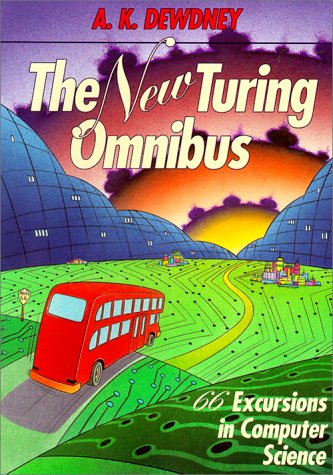 |
| Smullyan |
Raymond M. Smullyan. To Mock a Mocking Bird and Other Logic Puzzles: Including an Amazing Adventure in Combinatory Logic. New York, New York: Knopf, 1985, ISBN 0-39453491-3. Oxford, England: Oxford University Press, 2000, 256 page, ISBN 0-19280142-2. Smullyan was at Princeton University working under Alonzo Church for his doctorate. He entered in 1957 and was awarded his Ph.D. in 1959. Appointed to a post at Princeton in 1958, he worked there until 1961. He taught at Yeshiva universities and the City University of New York before joining Indiana's faculty in 1981. Oscar R. Ewing Professor Emeritus of Philosophy Indiana University, Bloomington. More at MacTutor History of Mathematics "A certain enchanted forest is inhabited by talking birds." |
 |
| Gardner | Martin Gardner. Sphere Packing, Lewis Carroll, and Reversi. Cambridge University Press, 2009. ISBN13 987-0521756075. Collection of 20 reprint of his "Mathematical Games" columns from the 1959 and 1961 issues of Scientific American. 1. The binary system; 4. The games and puzzle of Lewis Carroll; 13. Polyominoes and fault-free rectangles |
 |
| Nagel | Ernst Nagel and James Roy Newman (1907-1966). Gödel's Proof. New York: New York University Press, 1958. New York: Knopf, 1985, ISBN 0-39453491-3. London: Routledge, 1989, ISBN 0-415-04040-X. New York: New York University Press, 2001, ISBN 0-81475816-9. Description: xxiii, 129 p. : ill. ; 21 cm. The 2001 edition is revised with a preface by Douglas Hotstadter. |


|
| Devlin |
Keith J. Devlin. The Language of Mathematics: Making the Invisible Visible. New York: W. H. Freeman, 1998, ISBN 071673379X. Description: viii, 344 p., 16 p. of plates : ill. (some col.) ; 24 cm. Executive Director of CSLI and a Consulting Professor in the Department of Mathematics and Stanford University. He is a co-founder and Executive Director of the Stanford Media X Research Network |
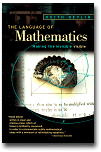 |
| Devlin |
Keith J. Devlin. Goodbye, Descartes: The End of Logic and the Search for a New Cosmology of the Mind. New York: Wiley, 1997, ISBN 0471142166. |
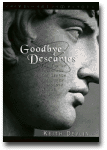 |
| Devlin |
Keith J. Devlin. Mathematics, the Science of Patterns: The Search for Order in Life, Mind, and the Universe. New York: Scientific American Library, 1994, ISBN 0716750473. |
 |
| Devlin |
Keith J. Devlin. Logic and Information. Cambridge, England: Cambridge University Press, 1991, ISBN 0521410304. |
|
| Barrow |
John D. Barrow. Pi in the Sky: Counting, Thinking, and Being. Oxford : Clarendon Press, 1992, ISBN 0-19853956-8. Description: xii, 307 p. : ill. ; 24 cm. What is mathematics and why does it work? The authors quotes everyone from Lao-Tse, Robert Pirsig, Charles Darwin, Kurt Gödel, and Umberto Eco. Since 1999 John D. Barrow is Research Professor of Mathematical Sciences at Cambridge and Director of the Millennium Mathematics Project, an initiative to improve the understanding and appreciation of mathematics and its applications amongst young people and the general public. He is the author of several books about the nature and significance of modern developments in physics and astronomy, including The Left Hand of Creation, The Anthropic Cosmological Principle, The World within the World, and, most recently, Theories of Everything: The Quest for Ultimate Explanation. |
 |
| Abelson et al. |
Hal Abelson, Ken Ledeen, and Harry R. Lewis. Blown to Bits: Your Life, Liberty, and Happiness after the Digital Explosion. Freely available on the Internet at download. |
 |
| Aharoni |
Udi Aharoni, illustrated by Gil Troitsa. Zuto: The Adventures of a Computer Virus. CreateSpace Independent Publishing Platform, 2012. ISBN-13: 978-1477683309. Udi Aharoni works at IBM Research and holds an M.A. in Computer Science. His interests include software engineering, machine learning, statistics, science in general, and animation. Short, animated scientific videos conceived by him have been featured in universities and at science fairs. See Zutopeida. Zuto is his first book. |
 |
| Kernighan |
Brian W. Kernighan. D is for Digital: What a Well-Informed Person Should Know About Computers and Communications. CreateSpace Independent Publishing Platform, 2011. ISBN-13: 978-1463733890. |
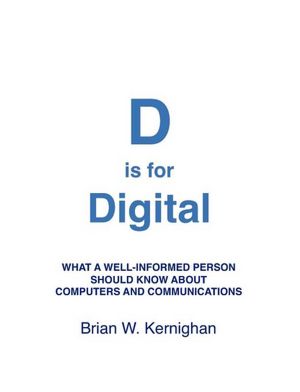 |
| Steiner |
Christopher Steiner. Automate This: How Algorithms Came to Rule Our World. |
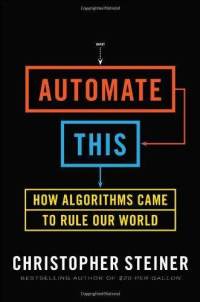 |
| Spraul |
V. Anton Spraul. Think Like a Programmer. |
 |
| Harel |
David Harel. Algorithmics: The Spirit of Computing, second edition. Harlow, England; Reading, Massachusetts: Addison Wesley, 1992. ISBN 0-201-50401-4 |
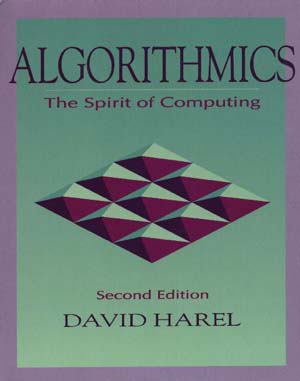 |
| Shneiderman |
Ben Shneiderman. Leonardo's Laptop: Human Needs and the New Computing Technologies. MIT Press, 2002, ISBN 0262194767. 2003, ISBN 0262692996. |
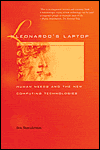 |
| Stoll |
Clifford Stoll. The Cuckoo's Egg: Tracking a Spy Through the Maze of Computer Espionage. New York: Pocket Books, 1990, ISBN 0-74341163. An exciting read. |  |
| Fant |
Karl M. Fant. Computer Science Reconsidered: The Invocation Model of Process Expression. New York: Wiley, 2007, ISBN13 978-0-471-79814-9. Description: 269 pages. "Mathematicians and computer scientists are pursuing fundamentally different aims, and the mathematician's tools are not as appropriate as was once supposed to the questions of the computer scientist. The primary questions of computer science are not of computational possibilities but of expressional possibilities. Computer science does not need a theory of computation; it needs a comprehensive theory of process expression." Interesting thesis, but this book does not have my recommendation. |
 |
| Kahn |
David Kahn. The Codebreakers: The Story of Secret Writing, revised edition. New York: Scribner, 1996, ISBN 0684831309. Description: xviii, 1181 p. : ill. ; 25 cm. Originally published 1967. Chapter 26: Messages From Outer Space. |
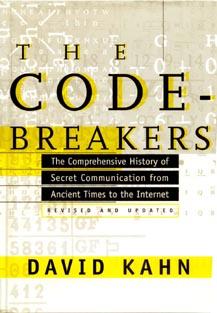 |
| Brooks |
Fredrick Phillips Brooks (1931-2022). The Mythical Man Month.

|
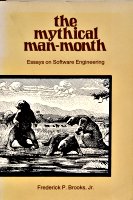 |
| Weinberg |
Gerald Weinberg. The Psychology of Computer Programming (Silver Anniversary Edition) by 1998, ISBN 0-932633-42-0. This landmark 1971 classic is reprinted with new commentary and a preface from the author. Origin of "Ego-less programming." |
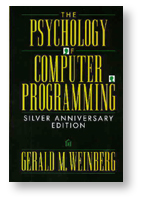 |
| James | Geoffrey James (b. 1953). The Tao of Programming. Santa Monica, California: InfoBooks, 1987, ISBN 0931137071. Description: xvii, 151 pages, illustrations, 19cm. James is a journalist and free-lance writer. He wrote a spoof of the Tao Te Ching consisting of short anecdotes divided into nine “books.”
James wrote two sequels: The Zen of Programming (1988) and Computer Parables (1989). |
 |
| Yourdon |
Edward Yourdon. Death March. Prentice Hall PTR, 1997, ISBN 0137483104. |
|
| Beck |
Kent Beck. Extreme Programming Explained: Embrace Change. Addison-Wesley, 1999, ISBN 0-201-61641-6. Origin of extreme programming: listening, testing, coding, and designing. Listening means meeting users regularly, and taking down "user stories." Testing means creating executable test scripts even before coding starts. Coding means pairs of programmers working together to create the simple solutions for tasks based on user stories. Designing means going over the code and "refactoring" it to remove any duplications or inelegant constructs. |
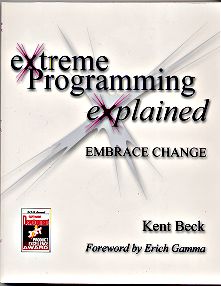 |
| Penrose |
Roger Penrose. The Emperor's New Mind: Concerning Computers, Minds, and the Laws of Physics. Oxford England: Oxford University Press, 1989, ISBN . New York: Penguin Books, 1991, ISBN 0140145346. Author is the Rouse Bell Professor of Mathematics at the University of Oxford. Penrose is not the first to attack strong AI. Perhaps the most famous attack on the field was by John R. Searle, in his classic article "Minds, brains, and programs". In that article, Searle introduced the "Chinese Room" experiment and, in fact, termed the phrase "Strong AI". |
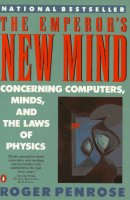 |
| Chiang |
Mung Chiang. Networked Life: 20 Questions and Answers. Cambridge, UK: Cambridge University, 2012, ISBN 978-1-107-02494-6.

|
 |
| Pearl |
Judea Pearl and Dana MacKenzie. The Book of Why: The New Science of Cause and Effect. Basic Books: New York. 2018. ISBN 978-0-465-09760-9. NYT book review |
 |
| Barabási |
Albert-László Barabási. Linked: The New Science of Networks. Perseus Publishing, Cambridge, Massachusetts, 2002. ISBN: 0-7382-0667-9. "In this lively and intriguing book, Albert-László Barabási traces the history of connected systems from early graph theory in the 18th century to cancer drugs based on our modern understanding of cellular networks, and identifies the correspondences between the work of network mapmakers active in a wide range of disciplines today. As he examines the networks behind such complex systems as the cell or society, he identifies the nodes and links, revealing the architecture of complexity and its universal organizing principles, which affect everything from democracy to disease." |
 |
| Barabási |
Albert-László Barabási. Bursts: The Hidden Patterns Behind Everything We Do, from Your E-mail to Bloody Crusades. Penguin Press, New York, New York, 2010. ISBN: 978-0-452-29718-0. An interwoven collection of tales in random directions with steps of various sizes. See Levy flight |
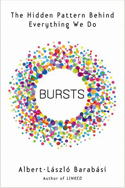 |
| Flake |
Gary William Flake. The Computational Beauty of Nature: Computer Explorations of Fractals, Chaos, Complex Systems, and Adaptation. MIT Press, Cambridge, Massachusetts. 1998. ISBN 0-262-56127-1. |
 |
| Lessig |
Lawrence Lessig
Free Culture: How Big Media Uses Technology and the Law to Lock Down Culture and Control Creativity. Penguin Press, New York, New York, 2004. ISBN: 1-59420-006-8. Intellectual property |
 |
| Wilkes |
Maurice Wilkes. Computing Perspectives. Morgan Kaufmann, 1995, ISBN 1558603174. Wilkes, one of the founders of computing, has provided enormous contributions to the development of computers, including the design and construction of the EDSAC computer and early development of programming for a stored program computer. He was responsible for the concept of microprogramming. Wilkes also wrote the first paper to appear on cache memories and was an early worker in the field of wide-bandwidth local-area networks. In 1992 he was awarded the prestigious Kyoto Prize for Advanced Technology. He is staff adviser on research policy to the Director of AT&T Laboratories Cambridge (formerly ORL). For many years he was head of the Computer Laboratory of Cambridge University. In 1980, he moved to the Digital Equipment Corporation in Maynard, Massachusetts. He returned to England in the spring of 1986 in time to become a founding member of ORL and Member for Research Strategy on the Olivetti Research Board. He described my years at the Cambridge Computer Laboratory, together with my war experiences in radar and operational research, in Memoirs of a Computer Pioneer, MIT Press, 1985. |
 |
| Oram |
Edited by Andy Oram and Greg Wilson. Beautiful Code: Leading Programmers Explain How They Think. O'Reilly, 2007. Brian Kernighan, Karl Fogel, Jon Betley, Tim Bray, Eilliott Rusty Harold, Michael Feathers, Alberto Savoia, Charles Petzold, Douglas Crofford, Henry S. Warren, Jr., Ashish Gulhati, Lincoln Stein, Jim Kent, jack Dongarra and Piotr Luszczek, Adam Kolawa, Greg Kroah-Hartman, Diomidis Spinellis, Andrew Kuchling (Python), Travis E. Oliphant, Ronald Mak (Java), Rogerio Atem de Carvlho and Rafael Monnerat, Bryan Cantrill (C, Solaris), Jeff Dean and Sanja Ghernawat (psuedo C, Google), Simon Peyton Jones (Haskell), Kent Dybvig (Scheme), William Otte and Douglas C. Schmidt (C++, network logging), Andrew Patzer, Andreas Zeller, Yukihiro Matsumoto, Arun Mehta, T. V. Raman (Emacs Lisp), Laura Wingerd and Christopher Seiwald, Brian Heyes. |
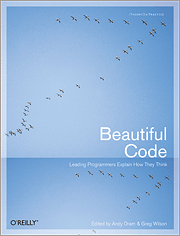 |
| Dijkstra |
Edsger W. Dijkstra. Selected Writings on Computing: A Personal Perspective. New York: Springer-Verlag, 1982, ISBN 0387906525. |
|
| Markoff |
John Markoff. What the Dormouse Said: How the 60s Counterculture Shaped the Personal Computer Industry. Viking, 2005, ISBN 067003382. Doug Englebart, Stanford AI Lab (SAIL), Larry Tesler, Ken Kesey, Joan Baez, Bill Gates.
|
 |
| Hodges |
Andrew Hodges. Alan Turing: The Enigma. Also a musical! |
 |
| Hammerman | Robin Hammerman and Andrew L. Russell. Ada's Legacy: Cultures of Computing from the Victorian to the Digital Age. New York: Association for Computing Machinery, 2016. Description: 262 pages. ISBN 978-1970001518; DOI 10.1145/2809523.
|  |
| O'Regan |
Gerard O'Regan. Giants of Computing: A Compendium of Select, Pivotal Pioneers. London, England: Springer Verlag, 2013. ISBN: 978-1-4471-5339-9 (Print); 978-1-4471-5340-5 (Online). Biographies of Howard Aiken, Gene Amdahl, Archimedes, John Atanasoff, Charles Babbage, John Backus, Gordon Bell, Tim Berners-Lee, Dines Bjxrner, George Boole, Fred Brooks, Vannevar Bush, Vint Cerf, Alonzo Church, Noam Chomsky, Edgar Codd, Reni Descartes, Tom DeMarco, Edsger Dijkstra, George Devol, Larry Ellison, Don Estridge, Michael Fagan, Tommy Flowers, Robert Floyd, Bill Gates, James Gosling, C.A.R Hoare, Heman Hollerith, Watts Humphrey, Kenneth Iverson, Ivar Jacobson, Steve Jobs, Gary Kildall, Donald Knuth, Gottfried Wilhelm Leibniz, Ada Lovelace, John McCarthy, John Mauchly, Marvin Minsky, Gordon Moore, Grace Murray Hopper, Ken Olsen, David Parnas, Dennis Ritchie, Dana Scott, John Searle, Claude Shannon, William Shockley, Richard Stallman, Alan Turing, John von Neumann, Thomas Watson Sr. and Jr., Joseph Weizenbaum, Frederick Williams, Niklaus Wirth, Ed Yourdon, Konrad Zuse. |  |
| Slater |
Robert Slater. Portraits in Silicon. Cambridge, Massachusetts: MIT Press, 1987, ISBN 0262192624. Biographies of Charles Babbage (1791-1871), Alan Mathison Turing (1912-1954), John von Neumann (1903-1957), Claude Elwood Shannon (b. 1916), Konrad Zuse, John Vincent Atanasoff (1903-1995), John William Mauchly and John Presper Eckert (1919-1995), Howard Aiken, Jay Wright Forrester, Thomas John Watson, Sr. (1874-1956), William Norris, H. Ross Perot, William Shockley, Robert Noyce, Jack Kilby, Marcian E. (Ted) Hoff, Gene Amdahl, Seymour R. Cray, Gordon Bell, Grace Murray Hopper (1906-1992), John Warner Backus (b. 1924), John Kemeny and Thomas Kurtz, Gary Kildall (1942-1994), William Gates, Dennis Ritchie and Kenneth Thompson, Daniel Bricklin, Nolan Bushnell, Steven Jobs, Adam Osborne, William Nillard, and Donald Ervin Knuth. |
|
| Shasha |
Dennis Elliot Shasha and Cath A. Lazere. Out of Their Minds: The Lives and Discoveries of 15 Great Computer Scientists. New York: Copernicus, 1995, ISBN 0-387-97992-1. Biographies of John Backus, John McCarthy, Alan C. Kay, Edsger Wybe Dijkstra, Michael O. Rabin, Donald Ervin Knuth, Robert E. Tarjan, Leslie Lamport, Stephen Cook and Leonid Levin, Frederick P. Brooks, Jr., Burton J. Smith, W. Daniel Hillis, Edward A. Feigenbaum, Douglas B. Lenat. |
 |
| Lammers | Susan M. Lammers. Programmers at Work: Interviews with 19 Programmers Who Shaped the Computer Industry. Redmond, Washington: Microsoft Press, 1989, ISBN 1556152116. Description: 391 pages, 24cm.
|
|
| Ceruzze | Paul E. Ceruzze. The History of Modern Computing. MIT Press, 2012 ISBN: 9780262032551 |
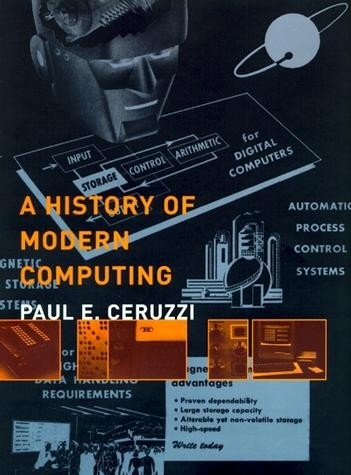 |
| Ceruzze | Paul E. Ceruzze. Computing: A Concise History. MIT Press, 2012 |
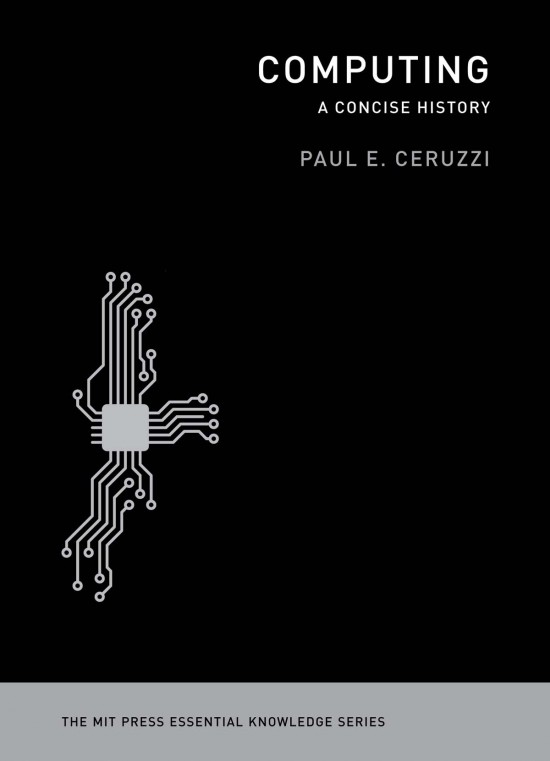 |
| Haigh & Ceruzze | Thomas Haigh and Paul E. Ceruzze. A New History of Modern Computing: How the computer became universal. MIT Press, 2021. ISBM:9780262542906. |
 |
| Sun |
Sun Microsystems, Inc. Hello Worlds(s)---From Code to Culture: A 10 Year Celebration of Java Technology Upper Saddle River, New Jersey: Pearson Education, published 2005, copyright 2006, ISBN-13 978-0-13-188867-8. Description: book (print), 96 pages, 21x29cm. Foreword by James Gosling. |
 |
| Salus |
Peter H. Salus. Quarter Century of Unix. Reading, Massachusetts: Addison-Wesley, 1994, ISBN 0-201-54777-5. Peter H. Salus is Chief Knowledge Officer at Matrix NetSystems in Austin, Texas. He has served as director of many non-profit organizations: Tcl/Tk Consortium, Free Software Foundation, Sun User Group, Open Software Foundation, and the USENIX Association. From 1963 to 1983 he was in academia, serving as 1. Dean, College of Arts and Sciences, University of North Florida, 1980 - 1983; 2. Member, Governing Council, University of Toronto, 1976 - 1979; 3. Chairman, Division of Humanities, Scarborough College University of Toronto, 1969 - 1974; 4. Chairman, Program in Linguistics, University of Massachusetts, 1967 - 1969; 5. Chairman, Department of Linguistics, Queens College, CUNY, 1965 - 1967. Salus holds a Ph.D. (1963) New York University (Linguistics); an M.A., 1961, New York University (Germanic Languages); and a B.S., 1960, University College, New York University (Chemistry). He was awarded the NYU Founders' Day Award for `Distinguished Doctorate,' in 1964, and a Fulbright-Hayes grant to Iceland, 1962-63. |
 |
| Salus |
Peter H. Salus. Casting the Net: From ARPANET to INTERNET and Beyond. Reading, Massachusetts: Addison-Wesley, 1995, ISBN 0-201-87674-4. |
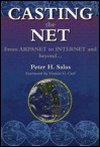 |
| Salus |
Peter H. Salus. The Daemon, the GNU and the Penguin: How Free and Open Source is Changing the World. Reed Media Services, 2008, ISBN-13 978-0-9790342-3-7.
|
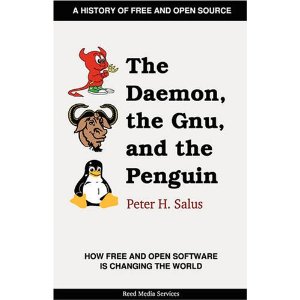 |
| Stephenson |
Neal Stephenson. In the Beginning Was the Command Line. 1999, ISBN 0380815931. An essay which was originally published on-line in 1999 and later made available in book form. The essay is a commentary on why the proprietary operating systems business is unlikely to remain profitable in the future because of competition from free software. It also analyzes the corporate/collective culture of the Microsoft, Macintosh, and free software communities. |
 |
| Dyson |
George Dyson. Turing's Cathedral: The Origins of the Digital Universe. Knopf Doubleday Publishing Group, 2012. ISBN 9781400075997.
|
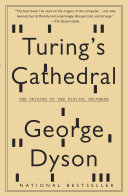 |
| Burks |
Alice Rowe Burks Who Invented the Computer? The Legal Battle That Changed Computing History. Prometheus Books, 2003, ISBN 1591020344. Foreword By: Douglas R. Hofstadter See also Atanasoff, 1988, by Clark Mollenhoff. |
 |
| Kidder |
Tracy Kidder. The Soul of a New Machine. 1981, ISBN 0316491977. Random House, 1997, ISBN 0679602615. Winner of the Pulitzer Prize for general non-fiction and the American Book Award in 1982. The author has written several other acclaimed books and writes for the Atlantic Monthly. This book tracks a team of engineers at Data General Corporation working on a new 32-bit superminicomputer. |
 |
| Lee | Lenoard Lee. The Day the Phones Stopped. |
|
| Poundstone | William Poundstone. How Would You Move Mount Fuji? Microsoft's Cult of the Puzzle: How the World's Smartest Companies Select the Most Creative Thinkers. Boston, Massachusetts: Little, Brown, 2003, ISBN 0316919160. Description: x, 276 pages, illustrated, 20cm. More technical and focused on software is the book: Programming Interviews Exposed: Secretes to landing Your Next Job by John Mongan and Noan Soujanen. |  |
| Davis |
Martin Davis. The Universal Computer: The Road from Leibniz to Turing. New York, Norton, 2000, ISBN 0-393-04785-7. Computing can be viewed from the hardware perspective with pioneers such as Babbage, Atanasoff, Zuse, Aiken, etc. This books takes the mathematical perspective. Turing used ideas from Cantor and Gödel to solve “the” decision problem formulated by Hilbert. The problem required a precision to logical reasoning that Frege provided which attempted to fulfill Leibniz's dream of a calculus for human reasoning. |
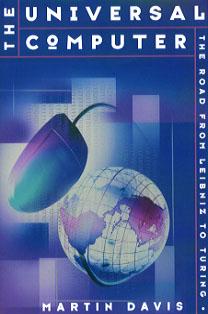 |
| MacCormick |
John MacCormick. Nine Algorithms That Changed the Future: The Ingenious Ideas That Drive Today's Computers. 2011.
|
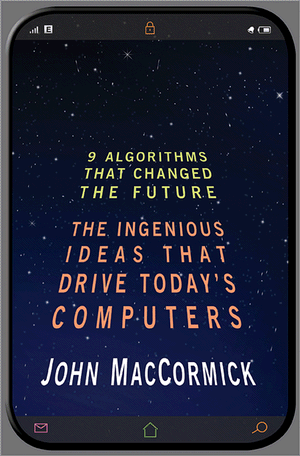 |
| Thorp |
Jer Thorp. Living in Data: A Citizen's Guide to a Better Information Future. New York: MD, Farrar, Straus and Giroux, 2021. ISBN 9780374189907.
|
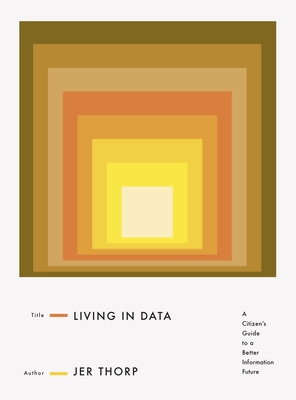 |
| Tufte |
Edward Tufte. The Visual Display of Quantitative Information, second edition.
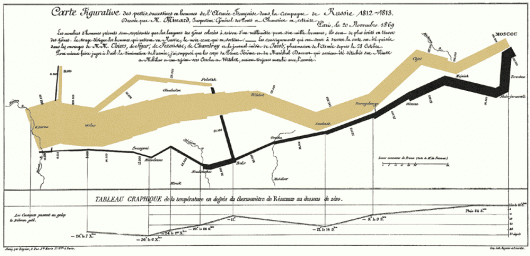
|
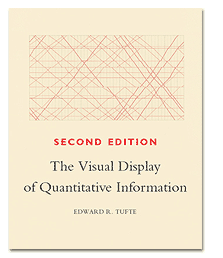 |
| Tufte |
Edward Tufte. Envisioning Information. |
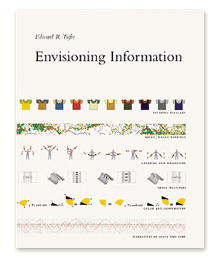 |
| Skiena |
Steven S. Skiena (SUNY Stony Brook) and Miguel A. Revilla (University of Valladolid). Programming Challenges: The Programming Contest Training Manual. New York: Springer, 2003, ISBN 0-387-00163-8. |
 |
| Lewis |
Harry R. Lewis, editor. Ideas That Created the Future: Classic Papers of Computer Science. MIT Press, 2021. Aristotle, Leibniz, Menabrae, Boole, Hilbert, Turing, ... |
 |
| Heijenoort | Jan van Heijenoort. From Frege to Gödel: A source Book in mathematical Logic, 1897-1931. Cambridge, Massachusetts, Harvard University Press, 1967, ISBN 0-674-32450-1.


|

|
| Domingos | Pedro Domingos. The Master Algorithm: How the Quest for the Ultimate Learnng Machine Will Remake Our World. New York: Basic Books, 2015. ISBN 978-04665065707.
|
 |
| Wu | Tim Wu The Attention Merchants: The Epic Scramble to Get Inside Our Heads. New York: Knopf Doubleday Publishing Group, 2016. ISBN 978-0-385-35201-7. Tim Wu is the Isidor and Seville Sulzbacher Professor of Law at Columbia Law School and a contributing opinion writer for the New York Times. He is best known for coining the phrase network neutrality in his 2003 paper "Network Neutrality, Broadband Discrimination".
“Attention itself has become the currency of the information age.” James Gleick. NYT book review |
 |
| Clegg | Brian Clegg Are Numbers Real? The Uncanny Relationship of Mathematics and the Physical World. St. Martin's Press, 2016. ISBN 978-1250081049
|
 |
| Linnebo | Øystein Linnebo Philosophy of Mathematics. Princeton University Press, 2017. ISBN-13: 978-0691161402
|
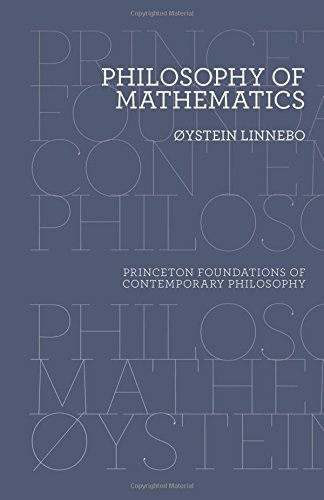 |
| Kneale | William Kneale and Martha Kneale. The Development of Logic. Oxford University Press, 1962. Oxford University Press, 1985, ISBN-13: 9780198247739. | |
| Budden | Francis James Budden (16 May 1919-Feb 1986). Fascination of Groups. Cambridge University Press, 1969. Cambridge University Press, 1972, ISBN: 0521080169. A fabulous math book on group theory; it does not belong on this list, but I couldn't bear to remove it. |
| Bueno | Carlos Bueno Lauren Ipsum: A Story About Computer Science and Other Improbable Things San Francisco: No Starch Prewss, 2015. ISBN 978-1-59327-574-7. Lauren, a clever girl lost in Userland, applies logic and problem solving skills to find her way home, encountering along the way such concepts as timing attacks, algorithm design, and the traveling salesman problem. “Captures the spirit of problem-solving and ignites readers’ imaginations.” — Sheryl Sandberg, Facebook COO |  |
| Doxiadis |
Apostolos K. Doxiadis and
Christos H. Papadimitrious,
art by Alecos Papadatos and Annie Di Donna Logicomix: An Epic Search For Truth. Bloomsbury, New York: Bloomsbury Publishing, 2009, ISBN 159914521. 
|
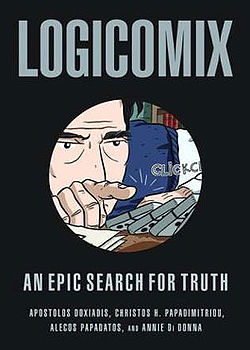 |
| Papadimitrious |
Christos H. Papadimitrious. Turing (A Novel about Computation). Boston, Massachusetts: MIT Press, 2003, ISBN 0-262-16218-0. The lessons center on mathematics, but they're nontechnical and entirely accessible. (The author, a computer science professor at Berkeley, must be a superb lecturer.) There are occasional gleams of futuristic cybergear -- the novel is set a little further on in the 21st century, and two of the lovers are world-class code writers. But what's most delightful about ''Turing" is the charmed glow that Papadimitriou's prose sheds all around: on sunny Mediterranean islands, on the pangs of love, even on death, of which the all-wise ''Turing" gives an astonishing account to a dying character. And if you know anything of Turing's life -- one of the most interesting in the 20th century -- “Turing”'s conclusion is exquisitely affecting.Review by George Scialabba for the Boston Globe |
 |
| Lightman |
Alan Lightman. Einstein's Dreams. ISBN 0-446-67011-1 A novel about the nature of time using Einstein's dreams. Alan Lightman is a professor of physics and writing at MIT. | |
| Knuth |
Donald Ervin Knuth. Surreal Numbers: How two ex-students turned on to pure mathematics and found total happiness. Reading, Massachusetts: Addison-Wesley, 1974, vi+119 pages, ISBN 0-201-03812-9. A few years ago John Horton Conway of the University of Cambridge hit on a remarkable new way to construct numbers &hhellip; Conway explained his new system to Donald E. Knuth, a computer scientist at Stanford University, when they happened to meet at lunch one day in 1972. Knuth was immediately fascinated by its possibilities and its revolutionary content. In 1973 during a week of relaxation in Oslo, Knuth wrote an introduction to Conway's method in the form of a novelette. … I believe it is the only time a major mathematical discovery has been published first in a work of fiction. &hhellip The book's primary aim, Knuth explains in a postscript, is not so much to teach Conway's theory as “to teach how one might go about developing such a theory.” |
 |
